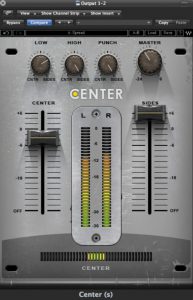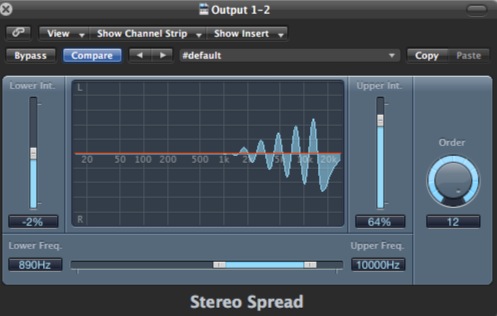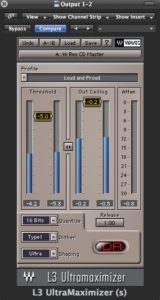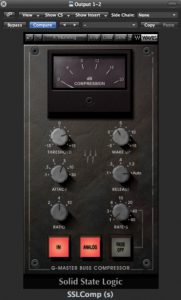Here is a new episode of Beat Making Sundays! I call this one “UFO“! It is an out-of-the-box club hop-hop beat that has some pretty cool percussive and synthesized elements in it. Enjoy!
Making A Beat for Busta Rhymes – BMS Ep. 49
Making A Club Beat – BMS Ep. 48
Finally back with a new episode of Beat Making Sundays! This is an aggressive club banger called “Go ‘Head” that would work great for a rapper or possibly a singer.
Audio Mastering In 6 Easy Steps
Mastering is the final step before a song or album is considered finished. There are audio engineers that specialize and dedicate their entire careers to the art of mastering. Audio mastering optimizes sound playback on all playback systems by applying corrective equalization and dynamic enhancement. I am in no way a mastering master, but wanted to provide some techniques that I use.
1) A clean mix. Before even thinking about mastering a song, the mix should be finalized. This means eq’ing, compressing and adding all the final touches to the track to have it sound the way it should. It is also important to make sure that the mix doesn’t peak and leaves room for the mastering to work its magic.
2) Master EQ. Once the mixing is done, bring the single bounced WAV track of the song into a new session – the “mastering session.” On the master channel, the first plugin on the “master chain” should be an equalizer. I prefer using Waves’ Linear Phase Eq Broadband. However, the stock Logic or Pro Tools equalizers work great too.
 Make only minor changes to the eq at this stage. Most of the noticeable eq’ing issues should have been worked out during the mixing stage. Depending on what the track needs, I lightly boost the bass (between the 64-128 range) and high frequencies (between the 4k and 8k range) to brighten up the track and give it a little more body.
Make only minor changes to the eq at this stage. Most of the noticeable eq’ing issues should have been worked out during the mixing stage. Depending on what the track needs, I lightly boost the bass (between the 64-128 range) and high frequencies (between the 4k and 8k range) to brighten up the track and give it a little more body.
3) Compression. The second plugin in my master chain is a compressor. A compressor acts as the glue that brings the track together and evens out both odd frequencies and levels in the mix. Waves provides some great preset options to start off with. I usually load up the “Mastering” preset and adjust from there. I would recommend keeping the release at automatic, and keep the ratio low. The volume will change as you turn the threshold. Don’t turn the threshold up too high because it will max out the track volume leaving no room for the rest of the plugins in the master chain to perform their duties. The “industry standard” volume will be achieved with a different plugin, so don’t fret.
4) Stereo Imaging. This technique makes the overall mix wider, giving the track more body. However, apply stereo imaging with care because a very wide master can lead to phasing issues. Phasing will make the track unenjoyable to listen to, which is exactly the opposite of what we want. I prefer either using Waves’ Center or Logic’s Stereo Spread. Although Center doesn’t provide much control over frequencies, it does a great job.
 Logic’s Stereo Spread is also great. The image below shows a recommended setting for how I usually use it in a master channel. Avoid spreading any frequencies below 100Hz because bass frequencies don’t carry any directional information and have more of an impact in mono than in stereo.
Logic’s Stereo Spread is also great. The image below shows a recommended setting for how I usually use it in a master channel. Avoid spreading any frequencies below 100Hz because bass frequencies don’t carry any directional information and have more of an impact in mono than in stereo.
 5) Maximizer. A maximizer is used to bring the song’s volume to “industry” level. It depends on the song, but I prefer using Waves’ L3 Ultramaximizer. This plugin does a great job boosting volume levels without making the track sound muddy or distorted.
5) Maximizer. A maximizer is used to bring the song’s volume to “industry” level. It depends on the song, but I prefer using Waves’ L3 Ultramaximizer. This plugin does a great job boosting volume levels without making the track sound muddy or distorted.
 The “Hi Res CD Master” preset is pretty good. I usually use it but then adjust the threshold accordingly. Moving the threshold down will bring the overall volume level up. I usually leave the ceiling at -0.2 and just focus on the threshold level.
The “Hi Res CD Master” preset is pretty good. I usually use it but then adjust the threshold accordingly. Moving the threshold down will bring the overall volume level up. I usually leave the ceiling at -0.2 and just focus on the threshold level.
6) Fade Out. The final step is to make sure that the track fades to black and ends at the desired time. A lot of the time it is recommended to leave a “tail” at the end of the song when exporting the mix. This allows for the end time to be decided while mastering. You don’t want the end to be too abrupt or too long.
This is what the master channel should look like.
![]() These techniques can be applied to a single song or to an entire album. If using these techniques for an album, it is integral to put each song on separate audio channels to provide more control over volume and equalization. The goal when mastering an album is making sure the volume levels are consistent and that each song flows nicely into the next.
These techniques can be applied to a single song or to an entire album. If using these techniques for an album, it is integral to put each song on separate audio channels to provide more control over volume and equalization. The goal when mastering an album is making sure the volume levels are consistent and that each song flows nicely into the next.
I offer mixing and mastering services, so please feel free to contact me if you are interested. I hope this short tutorial helps and good luck!
Music Producer Dr. Dre is Trying to Monopolize the Use of “Beat” and “Beats”
Music producer-turned-entrepreneur Dr. Dre has been trigger-happy with the law lately. Dre’s Beats Electronics, LLC (“Beats Electronics”), a high-end headphones and speakers company, owns the registered trademark for “beats” in a variety of trademark classes, including class 009 (headphones, loudspeakers, audio speakers, car audio speakers, media players for automobiles, CD players for automobiles). Consequently, Beats Electronics has been challenging trademark applicants trying to register marks that include either the word “beat” or “beats.”
Most of Beats Electronics’ targets are smaller companies. However, Beats Electronics is also pursuing bigger fish including an action against Sony Computer Entertainment, the maker of the PlayStation gaming system. Beats Electronics alleges that Sony’s use of the mark “beats” in connection with computer games, toy figures and online gaming services creates confusion in the eyes of consumers. As for the smaller companies, Beats Electronics is sending out cease and desist letters demanding that they abandon their active applications for trademark registration. J. Thomas McCarthy, the preeminent professor and scholar of trademark law, states that,
[s]ending groundless cease and desist threats followed by trademark litigation that has no plausible basis could give rise to a claim for malicious prosecution, abuse of process, or unfair competition . . . The key is whether cease and desist letters sent to such persons were sent in good faith with a reasonable basis in law and fact or were sent only to intimidate and frighten away customers of a competitor.
Based on the limited factual information available to the public, it appears as though Beats Electronics is targeting these companies in bad faith. Some of the targeted companies sell goods or services completely unrelated to headphones or audio equipment, like an electronic greeting card company. Beats Electronics is coming off as a “trademark bully” and this could come back to bite the company. As a result, recipients of over-reaching cease-and desist letters can take to the Internet to widely publicize the unfounded legal claim and inflict significant embarrassment on the company leading to negative public reaction toward the brand. McCarthy mentions that,
[t]he Internet makes it relatively easy for a vocal critic to “go viral” with a website or video complaining about the trademark enforcement policy of a consumer-oriented seller. There are thousands of people on the internet who are ready, willing and able to join a boycott or complaint campaign against a company that they think, rightly or wrongly, is acting like a trademark bully.
This is exactly what DJ Hen Boogie, founder of #youaintgotnobeats, did. He made a YouTube video explaining how he was sent a cease and desist letter from Beats Electronics stating that an amicable resolution can be achieved if Hen abandons the application for #youaintgotnobeats. The video has gained nearly 9,000 views in a little more than four months. Check it out here.
Music producers, artists, and DJs should be concerned about this because the use of “beat” or “beats” is commonplace when referring to instrumental hip-hop, r&b and pop musical compositions. Prohibiting the use of “beat” or “beats” in connection with musical creations would have serious implications for the music industry. Luckily, the court will likely find that Beats Electronics’ efforts are overreaching and abusive of their position in the marketplace as a ubiquitous brand that sells high-end headphones and audio speakers.
Video: Tamia Janelle’s single “Tonight”
My artist, 14 year old Tamia Janelle has officially released her debut single “Tonight” which was produced by yours truly. In her video, the young California singer-songwriter sings about moving on in life, no matter the roadblocks, all while enjoying her time out with friends. Tamia and I are working on an EP which is planned to be release in the beginning of 2014.






